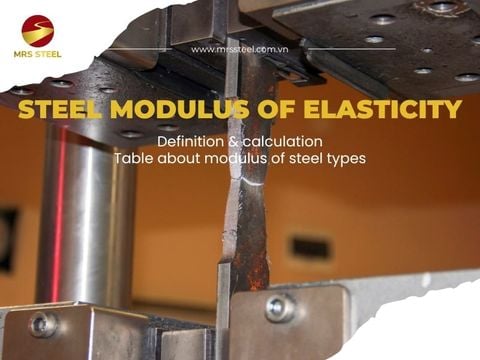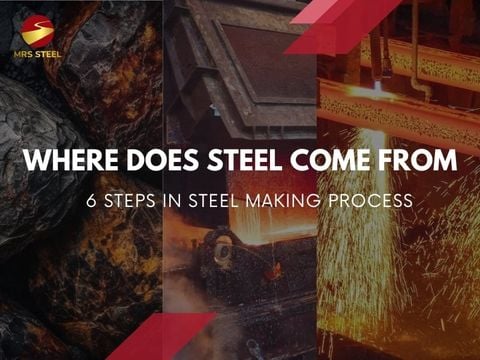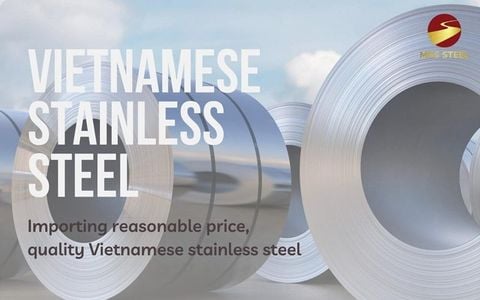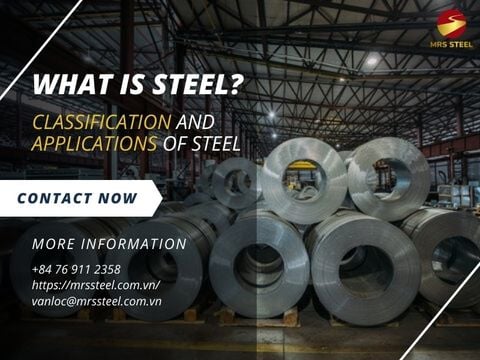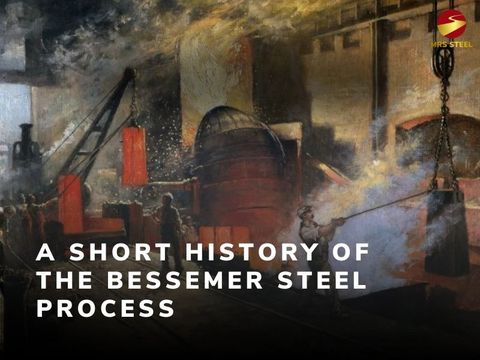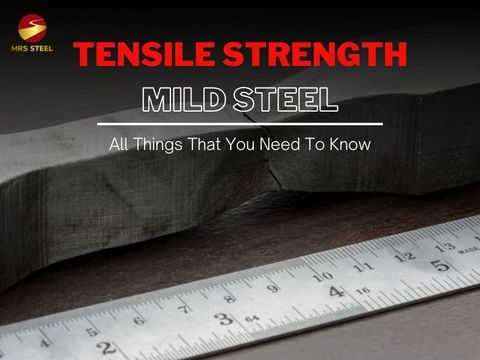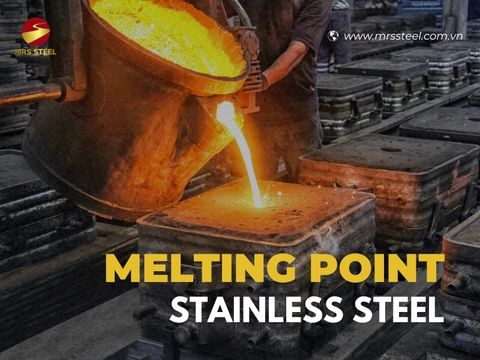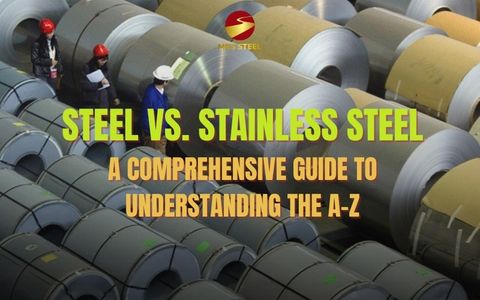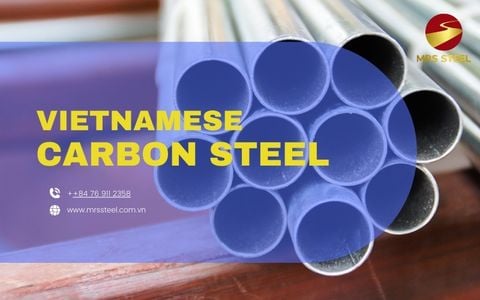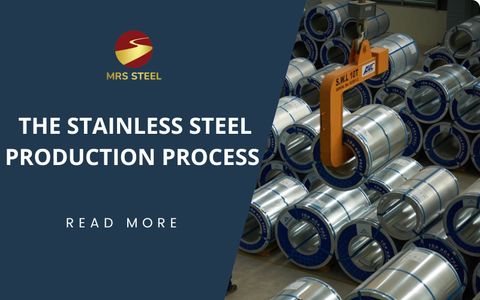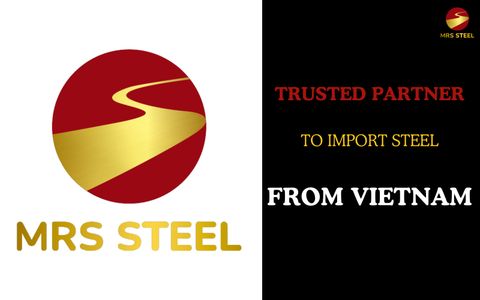Definition ultimate tensile strength, how it work and calculation

BlogDate: 04-06-2024 by: Ngan Le
The ultimate tensile strength of steel is a measure representing the maximum load-bearing capacity of steel before it undergoes complete fracture. Determining information about this parameter is a fundamental basis for selecting the appropriate type of steel according to the requirements of each application.
In today's article, MRS Steel will provide a clear definition of this index of steel, its role and operation, mathematical formulas, as well as the significance of related values!

Ultimate tensile strength determines maximum force that steel can withstand before fracturing
What is ultimate tensile strength?
Although steel possesses superior hardness, it also stands out due to its flexible ductility. Therefore, when a force is applied to its surface, steel will undergo some form of physical deformation. However, when considering ultimate tensile strength, steel will be subjected to a sufficiently large pressure until it completely fractures. The phenomenon is also known as "brittle fracture” in steel tensile strength.
The parameter is the representative value for the maximum tensile force that a product can withstand before it completely fractures. On a stress-strain curve, the horizontal axis typically represents the deformation of the steel, while the vertical axis represents the variation in tensile force. When the material is subjected to pressure beyond its limit, the line on the graph will reach its highest point, which corresponds to the deformation and fracture of the material.

The strain and stress increase until reaching the point of ultimate strength
What is the difference between ultimate tensile strength and tensile strength of steel?
Specifically, tensile strength of steel is a general concept that refers to the ability of material to withstand force before it completely breaks. Steel tensile strength provides an overall view of the hardness and load-bearing capacity, thereby helping engineers to better understand the characteristics of the product under various load conditions.
Meanwhile, ultimate tensile strength is a value that is higher than or equal to tensile strength because it represents the highest point on the stress-strain curve, where the force value reaches its maximum, indicating that the material has reached its maximum load capacity. Therefore, this parameter is used as a more specific value and becomes particularly important in applications that require specific design and technical calculations.
The value of this steel strength of this material typically ranges from 330 to 2000 MPa, depending on the chemical composition and manufacturing process of each type of steel. In general, the upper limit of this steel values is often much higher than the range of tensile strength values (330 - 480 MPa).

Tensile strength is a general concept, while UTS represents a specific numerical value
How does it affect steel strength?
Steel types with high ultimate tensile strength are often preferred for applications with heavy loads. Engineers can rely on this factor to calculate safety in mechanical, construction, automotive, and aerospace fields. For instance, in construction, when building load-bearing components such as beams, columns, and cables, knowing the maximum tensile force before facturing ensures these parts will not fail under those loads.
Additionally, the value of this steel strength helps manufacturers or buyers predict the lifespan and durability of steel components. Material fatigue is a process that occurs in any steel part that eventually fails due to repeated load pressures over time. Thus, knowing the tensile value helps them predict the rate of crack development, enabling buyers to plan for regular inspection and maintenance schedules.
In the automotive industry, by utilizing information about maximum forces that material can stand before it fractures, manufacturers can reduce the weight of vehicles while still ensuring the necessary durability and fuel efficiency. Additionally, knowing the UTS value helps manufacturers select suitable materials for each component of the vehicle; for example, load-bearing parts such as the frame can utilize steels with high UTS, while interior components can use lighter materials.

Engineers can rely on maximum tensile force to predict the lifespan of steel
Ultimate tensile strength's measurement methods
One of the most common methods to measure this parameter is tensile testing. Manufacturers will place a steel sample between a testing machine and apply force to both sides of the steel. At this point, the force-measuring device will record the tensile force at each moment until the steel sample breaks completely, and the maximum tensile force recorded before the sample fractures is the ultimate tensile strength.
In cases where the product is not suitable for tensile testing, such as when the sample is discrete or has an uneven structure, manufacturers will conduct compression testing instead. In contrast to tensile testing, the steel sample in compression testing is subjected to pressure on two surfaces until it reaches enough maximum pressure to deform the specimen until it is crushed.
Calculation of the ultimate tensile strength
The formula for calculating this indicator is based on the ratio between the applied force and the cross-sectional area of the test specimen. Both stress and tensile strength are measured in psi (pounds per square inch) or MPa (megapascal).
Stress = Force/Area
In general, the formula for this parameter is similar to that of tensile strength; however, the stress in ultimate tensile strength is the force acting over the entire area of the steel sample because UTS represents the maximum force that the material can withstand before fracturing. In contrast, with the formula for tensile strength, stress only measures the force acting on a specific area of the steel sample.

The calculation of UTS relied on the ratio between applied force and the sectional area
The role of MRS Steel in locating reliable steel manufacturers for your demand
MRS Steel, as a steel solution provider for importers with many years of experience in the Vietnamese market, will be a reliable partner for your projects. Currently, the company maintains strong relationships with numerous domestic steel manufacturers with massive annual production capacity and diverse product capabilities, which have ability to meet the technical standards as well as specific requirements.
Through the article above, MRS Steel hopes readers will gain a better understanding of ultimate tensile strength - one of the most important technical specifications for assessing steel strength. Understanding and applying this parameter will help customers make informed choices of suitable products for their projects.

MRS Steel have strong relationships with large steel mills will be an ideal partner for your project
For further information and consultation regarding steel products in Vietnam, please contact us via Whatsapp: +84 769 112 358 or Email: vanloc@mrssteel.com.vn.











